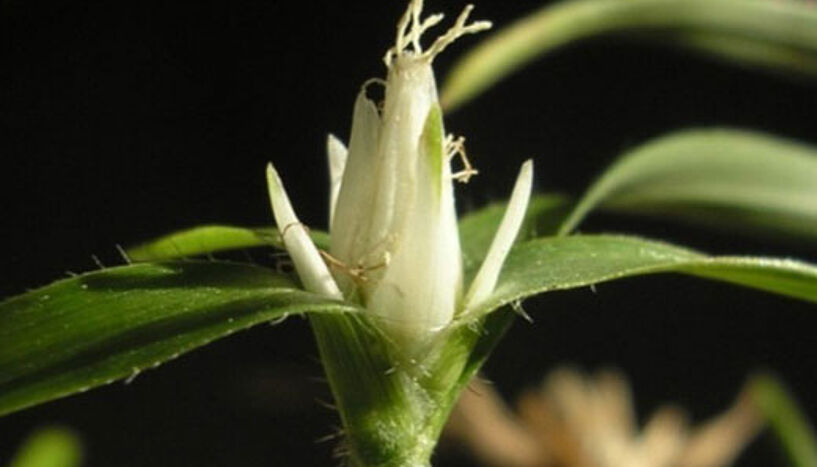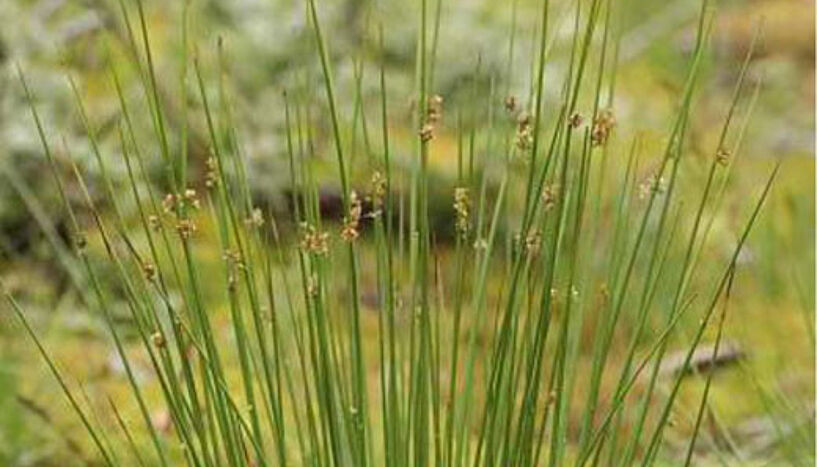Meiotic cell division "the other way round"
29. Oktober 2014New details on meiosis in organisms with holocentric chromosomes
Meiosis is not like another: Gabriela Cabral and Peter Schlögelhofer at the Max F. Perutz Laboratories (MFPL) of the University of Vienna and the Medical University of Vienna dived into the process of meiosis in specific plant species and revealed that these plants display an inversion of the standard meiotic phases. The researchers describe the detailed mechanisms in the scientific journal Nature Communications.
Meiosis is the two-step series of cell divisions that make sexual reproduction and genetic diversity possible.The coordination of the two meiotic chromosomal divisions (the reductional followed by the equational division) gives meiosis its distinctive characteristics: a reduction in the number of chromosomes by half, accompanied by mixing of parental chromosomes, and swapping of regions between homologous chromosomes (crossing over).
Some species have developed their own strategy to ensure genetic diversity in their offspring with a variation of the "standard procedure", as PhD student Gabriela Cabral and group leader Peter Schlögelhofer at the Max F. Perutz Laboratories (MFPL) now show. The researchers examined meiosis in Rhynchospora pubera and R. tenuis – plants that are widely distributed in Gabriela Cabral’s home country Brazil.
"I started studying meiosis in these species already in the lab in Brazil and 'imported' the project to Austria in 2009 as part of my master project", says first author Gabriela Cabral. In the meantime, she switched to the Dammermann group at MFPL and works now as a PhD student on the model organism C. elegans, a nematode worm.
And we've come full circle – C. elegans displays a chromosome type that is also present in the two plant species: During somatic cell divisions, their holocentric chromosomes have the unusual property of attaching to spindle microtubules along their entire length in contrast to the well-studied monocentric chromosomes in e.g. humans with a clearly localized attachment site (kinetochore) for spindle microtubules. Spindle microtubules are responsible for segregating chromosomes during cell division.
"Holocentric chromosomes create unique problems during meiosis that organisms with monocentric chromosomes do not face: They have to find another way to distribute the chromosomes correctly", explains Peter Schlögelhofer. "The plant species in our study have a special strategy on how to solve the problem: They show an inversion of the canonical meiotic sequence, with the equational division preceding the reductional."
Segregating sister chromatids during the first meiotic division represents an atypical process when compared to regular meiosis, but the real challenge is to orderly distribute homologous non-sister chromatids during the second, subsequent meiotic division.
Together with their colleagues at the Federal University of Pernambuco in Brazil and the Leibniz Institute of Plant Genetics and Crop Plant Research in Germany, the researchers at MFPL show that in the investigated plant species the homologous non-sister chromatids are associated with thin chromatin threads prior to the second meiotic division. These connections seem to provide sufficient force to allow proper orientation and disjunction during the second division.
In conclusion, Gabriela Cabral and Peter Schlögelhofer, in collaboration with the researchers from Germany and Brazil, not only present robust evidence for inverted meiosis in plant species, but they also provide the first in-depth analysis on their meiotic behavior.
Publication in Nature Communications:
Gabriela Cabral, André Marques, Veit Schubert, Andrea Pedrosa-Harand and Peter Schlögelhofer: Chiasmatic and achiasmatic inverted meiosis of plants with holocentric chromosomes.
In: Nature Communications (October 2014).
DOI: http://dx.doi.org/10.1038/ncomms6070
Scientific contact
Assoz.-Prof. Dr. Peter Schlögelhofer
Department of Chromosome Biology
Max F. Perutz Laboratories
1030 Vienna, Dr.-Bohr-Gasse 9
T +43-1-4277-56240
peter.schloegelhofer(at)univie.ac.at
Requests
Dr. Lilly Sommer
Max. F. Perutz Laboratories
Communications
T +43-1-4277-240 14
lilly.sommer(at)mfpl.ac.at
Mag. Veronika Schallhart
Press office
Research and teaching
1010 Wien, Universitätsring 1
T +43-1-4277-175 30
M +43-664-602 77-175 30
veronika.schallhart(at)univie.ac.at
Wissenschaftlicher Kontakt
Ass.-Prof. Dr. Peter Schlögelhofer
Department für Chromosomenbiologie Max F. Perutz LaboratoriesUniversität Wien
1030 - Wien, Dr.-Bohr-Gasse 1
+43-1-4277-562 40
peter.schloegelhofer@univie.ac.at
Rückfragehinweis
Mag. Veronika Schallhart
DLE ÖffentlichkeitsarbeitUniversität Wien
1010 - Wien, Universitätsring 1
+43-1-4277-17530
+43-664-8176793
veronika.schallhart@univie.ac.at


